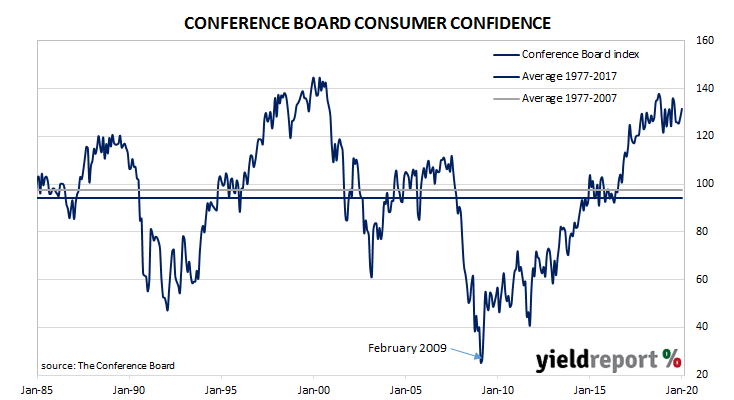US consumer confidence collapsed in late 2007 as the US housing bubble burst and the US economy went into recession. By 2016, it had clawed its way back to neutral and then went from strength to strength until late 2018. Since then, measures of consumer confidence have oscillated within a fairly narrow band at historically high levels.
The latest Conference Board survey indicates US consumers remained very optimistic. January’s Consumer Confidence Index registered 131.6, a little above the median consensus figure of 128.0 and December’s final figure of 128.2. Consumers’ views of present conditions and future conditions both improved from those held at the time of the December survey.
NAB Head of FX Strategy Ray Attrill said “the US consumer still looks to be in rude health”. ANZ senior economist Felicity Emmett expanded on this theme, pointing to “the lowest unemployment rate since 1969, the longest expansion on record, low inflation and near record-high job vacancies…Household balance sheets are strong…”
Treasury bond yields rose across the curve. By the end of the day, the yield on 2-year Treasury bonds had gained 3bps to 1.47% while 10-year and 30-year yields had each increased by 5bps to 1.66% and 2.11% respectively.
In the futures market for federal funds, expectations of another cut in the first half of 2020 remained low. According to end-of-day prices of federal funds futures, the implied probability of a 25bps rate cut at the FOMC’s January meeting is zero while the likelihood of a cut at March’s meeting remained at 8%. The April and June meetings of the FOMC had implied probabilities of another cut at 17% and 32% respectively.

